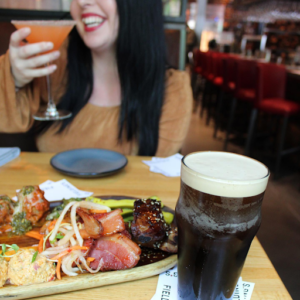Introduction:
Step into the bustling world of an authentic Asian restaurant, and you’ll find yourself immersed in a symphony of sizzling woks, aromatic spices, and the artistry of skilled chefs. The kitchen of such establishments is a culinary haven where tradition meets innovation, creating an experience that goes beyond just a meal. In this blog, we delve deep into the heart of an Asian kitchen, exploring the secrets, techniques, and passion that define the essence of authentic Asian cuisine.
The Ambiance:
Before we venture into the kitchen, let’s take a moment to appreciate the ambiance that sets the stage for the culinary spectacle. Authentic Asian restaurants often prioritize creating an atmosphere that mirrors the cultural richness of the cuisine they serve. From traditional decor and subtle lighting to the soothing sounds of Asian melodies, every element contributes to an immersive dining experience.
The Team:
At the core of any successful Asian kitchen is a dedicated and skilled team of chefs. These culinary maestros are often well-versed in the art of preparing diverse Asian dishes, each with its unique set of techniques and ingredients. From the head chef, who oversees the entire kitchen, to the wok chefs responsible for the quick and precise stir-frying, each member plays a crucial role in delivering an authentic and memorable dining experience.
The Wok Station:
The unmistakable centerpiece of the Asian kitchen is the wok station. A line of powerful gas burners, each supporting a seasoned wok, forms the beating heart of the kitchen. The wok’s concave shape and high sides allow for efficient heat distribution and quick cooking, making it an indispensable tool for a variety of dishes.
As you observe the chefs working their magic at the wok station, you’ll witness a dance of flames and ingredients. The sizzle and clatter of metal against metal create a rhythm that reflects the precision and speed required in Asian cooking. Whether it’s a classic stir-fry, a noodle dish, or a flavorful curry, the wok is the versatile canvas upon which these culinary artists craft their masterpieces.
Ingredients:
An authentic Asian kitchen is a treasure trove of exotic ingredients, each contributing to the complex flavors that define the cuisine. From aromatic herbs and spices like lemongrass, ginger, and garlic to specialty sauces such as soy, oyster, and hoisin, the pantry is a testament to the diverse and rich culinary traditions of Asia.
Freshness is paramount in Asian cuisine, and many restaurants source locally and seasonally to ensure the highest quality ingredients. Vegetables, meats, and seafood are meticulously prepared and organized, ready to be transformed into mouthwatering dishes. The chefs’ knowledge of balancing flavors, textures, and aromas is what elevates the dining experience to a sensory journey.
Techniques:
Asian cooking is an art that demands precision and expertise. Knife skills are honed to perfection, ensuring that vegetables are sliced thinly and meats are precisely cut. The wok chefs, in particular, showcase a mastery of stir-frying, flipping ingredients effortlessly to achieve the perfect sear while maintaining the ideal texture.
Marinating is another crucial technique in Asian kitchens. Meats and proteins are often marinated for hours, if not days, infusing them with a harmonious blend of flavors. This process adds depth to the dishes, creating a symphony of tastes with every bite.
In addition to the wok and marinating techniques, the mastery of steaming, boiling, and grilling further diversifies the range of dishes an Asian kitchen can offer. The delicate art of dumpling making or the precise timing required for the perfect bowl of ramen are just a few examples of the intricate skills that set Asian chefs apart.
Cultural Influence:
The authenticity of an Asian kitchen is deeply rooted in the cultural heritage from which it draws inspiration. Chefs often bring with them generational recipes, passed down through families and communities. This cultural influence is evident not only in the flavors but also in the presentation of dishes, reflecting the pride and tradition that underpin Asian culinary arts.
Adaptation and Innovation:
While tradition is a guiding principle, Asian chefs are not afraid to innovate and adapt to evolving culinary trends. The fusion of traditional recipes with modern techniques and local ingredients is a testament to the dynamic nature of Asian cuisine. This adaptability is what keeps the culinary scene vibrant and relevant, ensuring that even the most classic dishes can surprise and delight diners.
Conclusion:
Behind the wok of an authentic Asian restaurant in Sugar Land lies a world of passion, precision, and cultural richness. The skilled chefs, the aromatic ingredients, and the diverse techniques all come together to create an experience that transcends the act of eating. It’s a journey into the heart of a culinary tradition that values tradition while embracing innovation—a journey that tantalizes the taste buds, educates the senses, and leaves a lasting impression on those fortunate enough to partake in its delights. So, the next time you step into an authentic Asian restaurant, remember that what you’re about to savor is not just a meal but a masterpiece crafted with love and dedication in the kitchen.


